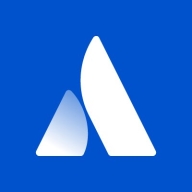

Asana and Trello are both prominent project management tools, competing in the field of task and project organization. Asana tends to have the upper hand for larger teams due to its robust feature set and adaptability, while Trello appeals to smaller teams with its simplicity and visual organization.
Features: Asana provides custom project templates, comprehensive integration options, and real-time collaboration tools, aiding in sophisticated project oversight with features like Gantt charts and a timeline view. Trello, on the other hand, excels with its intuitive Kanban boards, straightforward drag-and-drop functionality, and visual workflows, allowing users to manage tasks effectively with minimal setup.
Room for Improvement: Asana could enhance its intuitive workflow automation, notification settings, and onboarding resources. Users also request improved dashboard functionalities and seamless tool integration. Trello needs advanced project management capabilities similar to competitors, improved task linking, and stronger automatic task updates and external tool integration.
Ease of Deployment and Customer Service: Asana is accessible on both public and private cloud platforms but may benefit from more responsive technical support. Trello offers a straightforward setup primarily as a public cloud solution and generally delivers satisfactory customer service. Both tools are praised for their ease of use.
Pricing and ROI: Asana's pricing is higher, making it more suitable for larger organizations with complex project needs, promising substantial ROI through enhanced productivity. Trello offers a cost-effective model, including a robust free version that covers most needs, appealing to startups and budget-conscious teams due to its affordability compared to Asana.
However, due to its pricing, I need to be careful about adding each user and feature.
Sometimes we can have a back-and-forth conversation in the comments, which helps minimize some meetings.
The technical support is of high quality.
I tried to reach out to get answers before or even look on the web community support for things, such as the out-of-office notifications, without finding answers.
Asana is quite stable; it is a tool I can trust.
It would be easier if I could assign tasks directly from my email without needing to open Asana.
It would be beneficial to have a native option for Asana to create tickets so we could move away from our main ticketing tool.
More control over email notifications would also be helpful.
It would be beneficial to have a search system that can pull up topics using keywords or AI-driven capabilities, making it easier to find relevant cards.
A way to manage an overall project with all the specifications, and then managing all the sub-cards related to that project.
To add one user is expensive, which makes me cautious about upgrading or adding more users.
Asana's automation allows me to automate deadlines and send notifications to the right people about approaching deadlines.
The easy way to get all the analytics at the end of the month or year is the most important feature, and that's why we are still with Asana.
It replaces ping-ponging emails back and forth with a board where people can follow a task from start to finish and see when it's done.
Trello's interface is aesthetically pleasing for project management, and it enhances collaboration with other team members.
The best feature Trello offers is that it keeps things better organized, so it makes things easier to collaborate with people.
| Product | Market Share (%) |
|---|---|
| Asana | 4.1% |
| Trello | 2.2% |
| Other | 93.7% |


| Company Size | Count |
|---|---|
| Small Business | 38 |
| Midsize Enterprise | 7 |
| Large Enterprise | 6 |
| Company Size | Count |
|---|---|
| Small Business | 35 |
| Midsize Enterprise | 11 |
| Large Enterprise | 11 |
Asana is web-based software-as-a-service that helps teams coordinate and manage their work. It helps companies move faster by making sure everyone knows the team’s plan and process and who is doing what by when.
Each user can create projects using a list, board, calendar, or timeline view. Within each project, users can add tasks, subtasks, sections, comments, attachments, start and due dates, and custom fields. Project and task followers get notifications on changes or comments on the project and/or task in their Inbox. Individual users can see all of the tasks they're responsible for across all of their projects in a view called My Tasks.
Asana is available in English, French, Spanish, German, and Portuguese.
Trello is the visual collaboration tool that creates a shared perspective on any project. Trello’s boards, lists and cards enable you to organize and prioritize your personal and work life in a fun, flexible and rewarding way.
We monitor all Project Management Software reviews to prevent fraudulent reviews and keep review quality high. We do not post reviews by company employees or direct competitors. We validate each review for authenticity via cross-reference with LinkedIn, and personal follow-up with the reviewer when necessary.